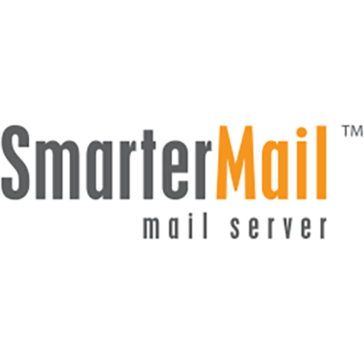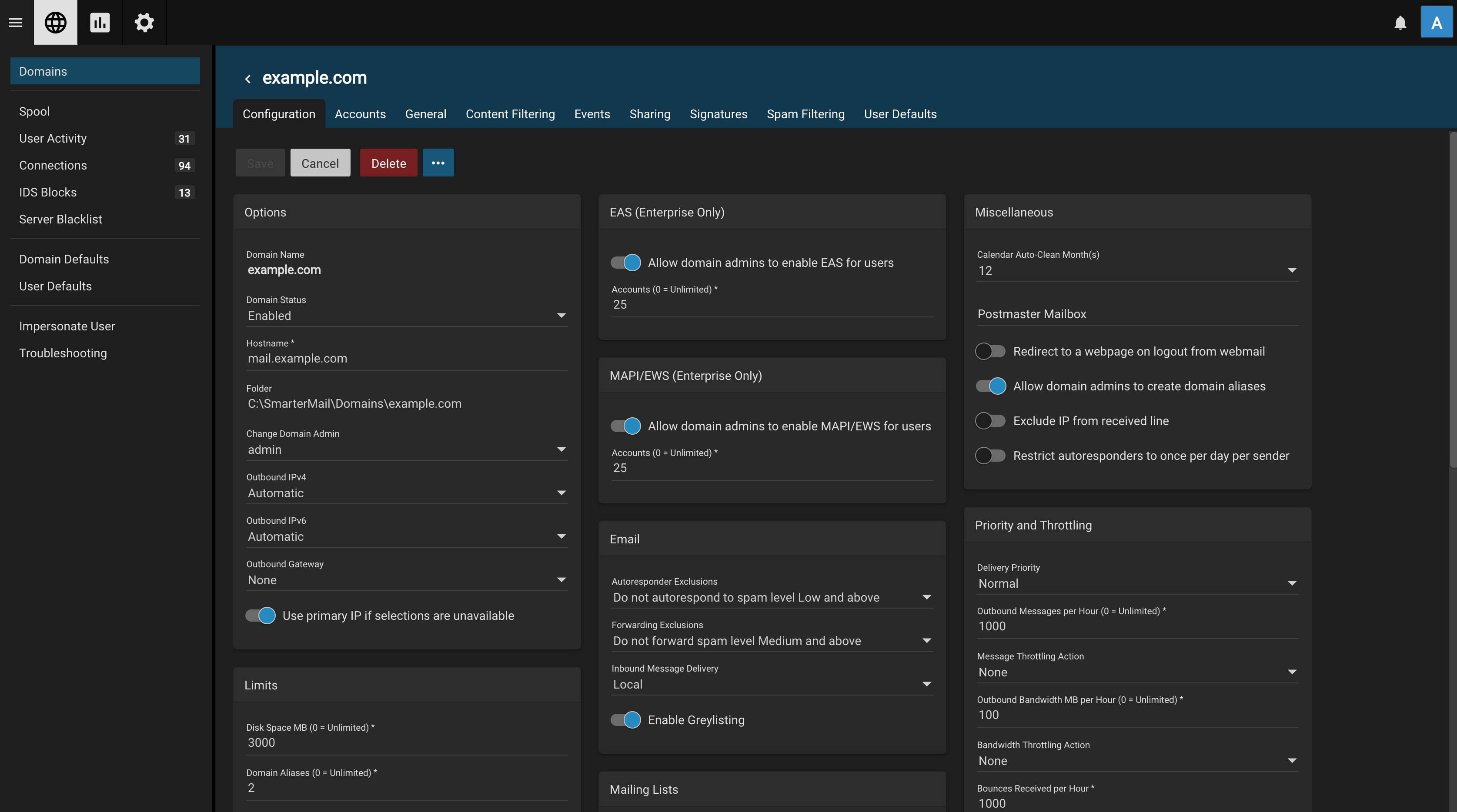About SmarterMail

Pros
-
“Smarter Mail is a high quality secure mail system with super organiztion capabilties.”
-
“It is affordable (much more than affordable than Exchange) for the small to medium business and makes for a great solution. The support has been good and we have had VERY few issues over the years.”
-
“So peace of mind is what Smarter Mail gives us.”
-
“Overall we are happy with SmarterMail as our mail server management tool. We manage email for over 80 clients with very little issue or concern.”
Cons
-
“You can go into each individually but mass reports are missing.”
-
“It’s Cumbersome, for some reason it takes forever for emails to appear in the inbox (even inter-company emails), terrible spam detection, difficult to sort emails, NOT that smart.”
-
“SmarterMail is low functioning in terms of design and features. You are unable to merge calendars and it is very difficult to access via mobile.”
-
“Blacklisting and whitelisting isn’t as locked down as it should be. Some blacklisted or spam identified emails get through after tagging.”

Features
SmarterMail offers standard mail server features such as the ability to use IMAP and POP to access mail, mail routing, mailing lists, and user aliases. Collaboration features include a robust calendaring and scheduling component, contact management, and tasks. It also provides a Webmail interface that is easy to use and integrated with the rest of its collaboration features, such as linking to tasks, chat interface, and a search tool to find messages and attachments. SmarterMail supports synchronizing mail onto mobile devices using Exchange ActiveSync, SyncML, CalDAV, and CardDAV.
Because we use SmarterMail as our in-house spam server collecting all the lovely samples for our anti-spam tests, we turned off all the spam and content filtering features. But I was impressed with the number of anti-spam and Web filtering tools available, including SpamAssassin and Clam-AV. CommTouch’s anti-spam add-on was available as a premium add-on, and I also had the option to integrate with third-party platforms such as Barracuda Spam Firewall. I also had the option to turn on greylisting, SPF, DomainKeys/DKIM, Bayesian filtering, reverse DNS lookups, blacklist and whitelists to control where mail was coming from, SMTP blocking, and custom headers.
Installation and Getting Started
We ran installation twice, once as a brand-new installation on a new server, and again as an upgrade on the lab’s mail server running version 6. The brand-new installation set up SmarterMail on an HP ProLiant MicroServer from 2010 (HP released a newer model this year with nicer specs) with Windows Server 2008 R2. Microsoft .NET 4.0 Framework and IIS was installed on the server, and the installation guide was very clear about which IIS components I needed to turn on.
At this point, the default configurations were enough for a basic mail server. I just needed to enter the server’s static IP address in the admin interface and I was good to go. Because SmarterMail comes with its own Web server, I was able to access the Web-based interface by pointing the browser to localhost, and making additional configuration changes even before the server was online.
The installation guide also has information on how to set up SmarterMail on Amazon EC2 as a virtual appliance. I found a knowledgebase article that showed me how to turn off the internal Web server and use IIS instead. It was easy to set up and quick.

The Administrator Interface
All the settings associated with a domain are located on the domain workspace so you don’t have to figure out how to relate the users and navigate out of the domain setting. Most of the setup takes place in one location and that can save you a lot of time. However, it took me a while to realize that logging into the interface as “admin” got me to a different workspace than “admin@mydomain.com.” Having that clearly outlined would have saved me a lot of confusion.
Finally, I created users and tweaked a few settings, such as creating aliases and mailing lists. I could create default settings for users that propagated across all users, so I didn’t have to go through that process repeatedly. There were some places that required a lot of digging, such as the fact that you have to have Webmail service enabled to view user mailboxes or to use Outlook. While the help text and knowledgebase is extensive and very thorough, there were some gaps, and they were more obvious because the rest of the documentation was so well-done.
Some of the options felt like it could have been bubbled up higher in the interface, as there was a lot of clicking and sub-menus required to find them. Yes, SmarterMail offers an amazing amount of control over the settings and lots of functionality, but sometimes the options are just hard to find.
Since we were turning off all the security settings, I got to see pretty much all of SmarterMail’s warning messages whenever I made the mail server less secure. There were warnings for password policy, the ability to quarantine suspect mails and to protect the mail server from attack. For real-use scenarios where you want the mail server to be secure, these warnings are very helpful.
Upgrade Challenges
SmarterTools makes sure each version of SmarterMail is backwards compatible, so there was no problem with the upgrade, where we jumped from version 6 to version 11. I had a little bit of trouble getting back to the admin workspace, but there was a knowledgebase article to help with that.
However, I found the process to migrate the mail from the old server to new server needlessly complicated. There was no way to just export the mail from SmarterMail, copy the data, and import into the new server. I had the option to export into a third-party format and then re-import. I could put both servers online and change the MX records to force the mail to replicate. Or I could update the older server and then copy the relevant configuration files to the newer server. Considering we were abandoning the older server because of failing hardware and we were assigning the IP address to the new server, having to go back and upgrade the old server again to just get at the mail felt like unnecessary work.
Bottom Line
SmarterMail is surprisingly agile server software and quite easy to work with. Some of the features are buried in the interface, but that’s because SmarterMail is packing in so many features and capabilities for small businesses. That said, I wonder how many small businesses really need the headaches of administering their own mail server when you can take advantage of Google’s phenomenal antispam technology by signing up for Google Apps or using Microsoft Exchange Online to get all the settings as a hosted offering. The price tag is attractive and the feature set phenomenal, but small businesses should balance the upfront costs with the ongoing administrative costs before committing to managing their own mail.
